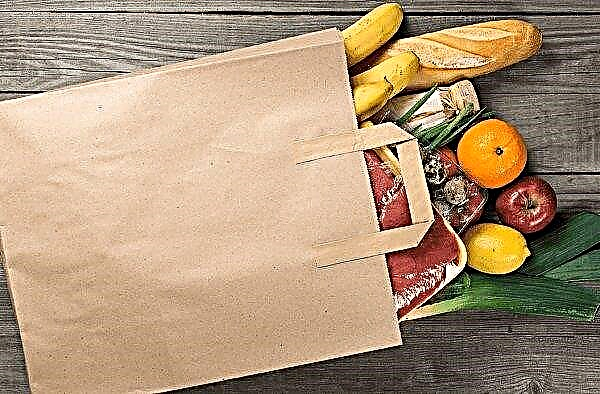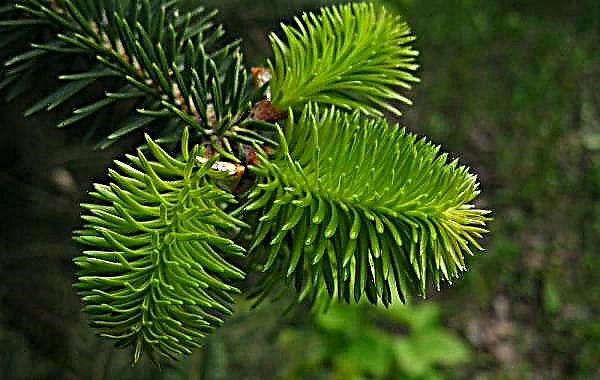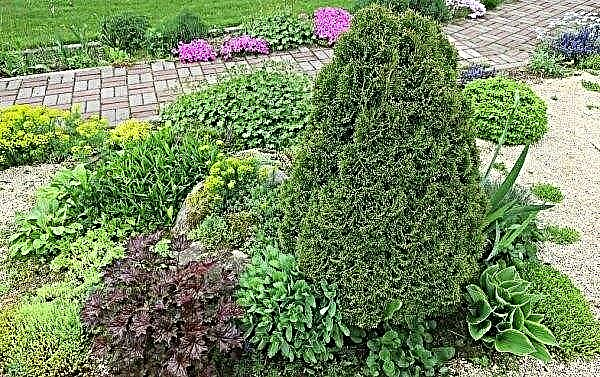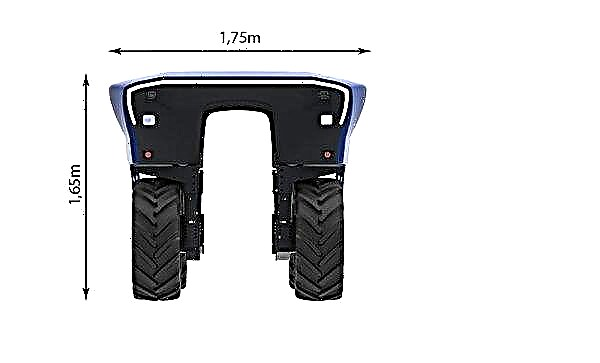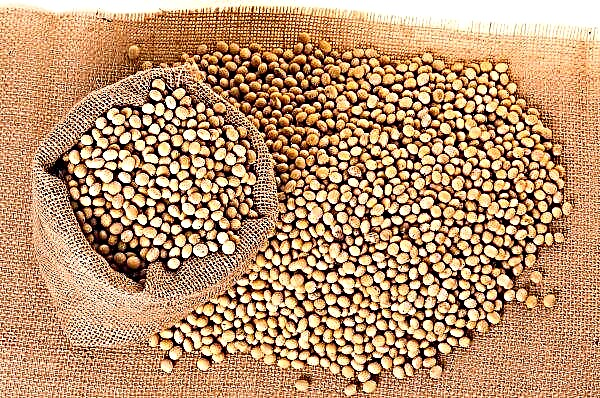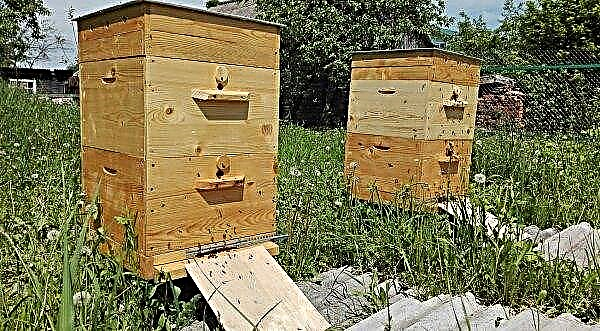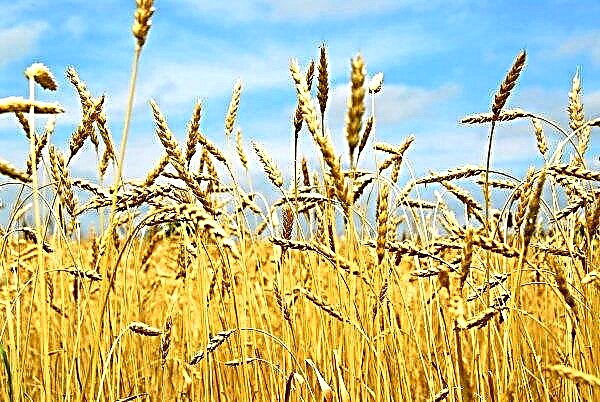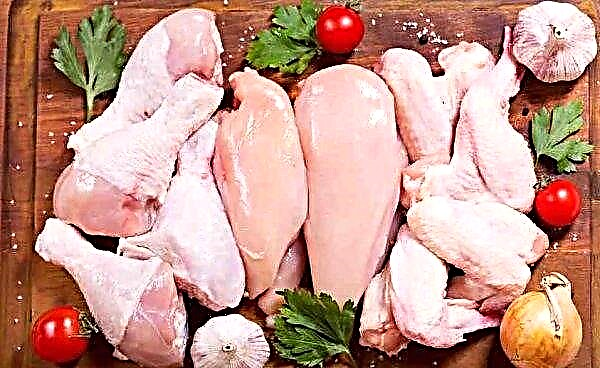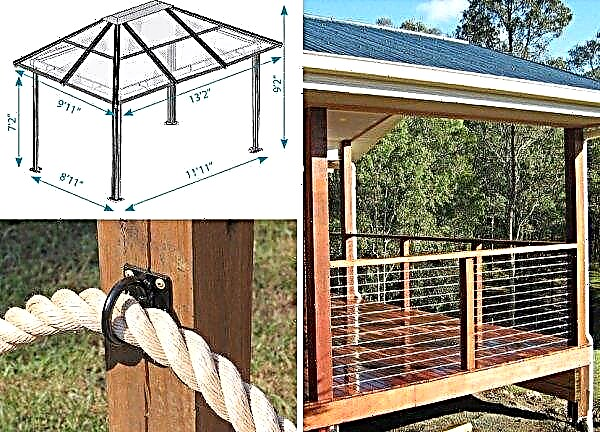Pumpkin is an unpretentious garden plant, the tasty and wholesome fruit of which takes pride of place in the culinary traditions of many countries. The dishes prepared from pumpkin are dietary, since the vegetable is rich in vitamins, fiber, minerals and, importantly, easy to prepare. How to grow this fruit is described in the article below.
Description and characteristics of the variety
Baby is an early ripening table variety (the period of full ripening is about 3 months). The pumpkin variety is characterized by a grayish color, the mass varies from 2.5 to 3 kg. Fruits are ellipsoid in shape (round and slightly flattened), inside there is a bright yellow pulp, not very juicy, but sweet in taste. The bark is thin, on a section contrasting, dark green. The yellow seeds of the fruit are oval, large, have a smooth, hard peel. The plant has a long main lash and large lobed leaves.
Pros and cons of the variety
Among the unconditional pluses of Baby are stable productivity (2.2–3.8 kg per 1 m²), even the quality of the soil almost does not affect this indicator. Another advantage is resistance to such a common disease as anthracnose. And, of course, the fruit itself - fragrant, not too juicy and honey-sweet, is well stored. The baby has a strong bark, which is convenient for transportation and sale of the crop.
Important! The land where legumes, onions and root vegetables (beets, carrots) were grown are suitable for planting pumpkins.
Another plus of the variety will be appreciated by the owners of agricultural enterprises - it is suitable for harvesting with the help of pumpkin harvesters. The obvious minus of the Baby variety is its susceptibility to powdery mildew, but, fortunately, there are many ways to prevent this nuisance.
Planting and growing at home
Pumpkin is an agricultural crop that is loved by both farmers and summer residents. It is easy to grow it, if you follow some rules.
Soil and crop rotation requirements
For cultivation, light loamy and suspended soil in a calm, sunny place is suitable. Experienced gardeners do not recommend planting it in the beds, where in the previous year sunflower, potatoes, cucumbers, zucchini or other melons (watermelon, melon) grew. You should not plant a pumpkin next to potatoes and tomatoes - the plants will not get along. But if the “territory” of the fetus borders on corn, legumes, it will be useful for all the “inhabitants” of the bed.
Suitable conditions
The baby is unpretentious to a cool climate. But if it tolerates cold, then without a sufficient amount of moisture, especially at the stage of flowering and the formation of the ovary, the result will not please. Therefore, regular watering is an important condition that must be observed in order to get a good crop. One plant requires 2 liters of warm (not ice) water.
The parameters are as follows:
- air humidity: 40-50%;
- soil moisture: 70–80%;
- blue-violet spectrum (choose a landing site that is illuminated by sunlight);
- temperature: +18 ... + 25 ° С.
Did you know? There are about 800 species of pumpkin in the world, but only 200 of them are edible.
Soil and seed preparation
Before planting a vegetable, it is necessary to prepare the site. It is better and more efficient to do this in the fall - to make a deep digging for the prevention of powdery mildew, to fertilize with compost or humus. If the moment is missed, and in the autumn period the soil was not fertilized, it can be done this spring, a week before pumpkin planting. Preparing seeds for planting is an important step if you want to get the maximum result. At first, it is recommended to sort out the seeds, discarding weak, empty and damaged ones. Particular attention should be paid to seeds not from the store and nursery, but by the fact that they were stored at home. If in doubt, fill the seeds with warm water and discard those that have surfaced - they are more likely spoiled. Before sowing seeds, it is advisable to germinate them. To do this, they are soaked for a couple of hours in warm water (+40 ... + 50 ° C), and then they are taken out and wrapped in a damp cloth (ideally gauze) for several days, making sure that the cloth does not dry out.
Particular attention should be paid to seeds not from the store and nursery, but by the fact that they were stored at home. If in doubt, fill the seeds with warm water and discard those that have surfaced - they are more likely spoiled. Before sowing seeds, it is advisable to germinate them. To do this, they are soaked for a couple of hours in warm water (+40 ... + 50 ° C), and then they are taken out and wrapped in a damp cloth (ideally gauze) for several days, making sure that the cloth does not dry out.
Planting seeds
There are 2 methods of planting seeds: in open ground and in pots for seedlings. Consider each of the methods.
Important! It is recommended to plant plants from seedlings in open ground not earlier than the air temperature warms up to +10 ... + 15 ° С.
In open ground
Before planting, you need to water the ground and wait until it settles a little. Wells need to be dispersed at a distance of 60 × 60 cm, put 2-3 seeds in each, with the sharp end in depth. The recess should be no more than 10 cm. When the sprouts sprout, and they have 4 leaves, you need to get rid of thin weak plants. If the climate of your area is characterized by late frosts, it is worthwhile to wait with the thinning of the sprouted fruit. Also, immediately after planting, it is necessary to mulch the soil with sawdust, straw or hay.
In pots for seedlings
The seedling method of growing pumpkins makes sense if your climate provides for early autumn frosts, and you want to get the crop as early as possible. Seedlings love the sun, so brightly lit window sills are suitable for its cultivation. Greenhouses or film frames are also a great option for the seedling method. Seedlings need drainage, the layer of which should be about 4 cm. When choosing containers for pumpkin seedlings, it is worth considering that the sprouts of this culture are gentle and do not like transplanting, so it is better to use special peat pots.
Before the fruit comes up, it is necessary to maintain the daily temperature at +18 ... + 25 ° С, and at night it should not be lower than +15 ... + 18 ° С. After germination, the daily temperature is gradually reduced (you can use a balcony for this) so that the seedlings do not stretch. 10 days after the shoots appeared, the air temperature is again raised to the previous level - such a simple secret will help to grow strong, stable sprouts. Watering pumpkin seedlings is necessary regularly, but with a small amount of water. Too wet rooms are also unfavorable for pumpkins. You can fertilize the seedlings a week after the seeds have gone. For this culture, organic fertilizing (for example, mullein solution 1:10, no more than 300 ml per seedling) and mineral (for example, nitrophoska, 10-15 g per 10 l) are suitable.
Watering pumpkin seedlings is necessary regularly, but with a small amount of water. Too wet rooms are also unfavorable for pumpkins. You can fertilize the seedlings a week after the seeds have gone. For this culture, organic fertilizing (for example, mullein solution 1:10, no more than 300 ml per seedling) and mineral (for example, nitrophoska, 10-15 g per 10 l) are suitable.
When the sprouts will have a strong not elongated stem and 3-4 developed leaves, they can be transplanted to a permanent place. As a rule, 20-30 days should pass between sowing seeds and replanting them in open ground.
If you still decide to transplant the seedlings by hand, and not together with a peat pot, you must do this very carefully so as not to damage the delicate roots of the plants. After planting, pumpkin should be abundantly watered, water for irrigation should be warm. After the transplant, it is advisable to cover the young seedlings with polyethylene or plastic bottles for 4–5 days so that they adapt better.
Video: planting pumpkin seedlings
Care Features
Since pumpkin is considered a persistent and unpretentious plant, some gardeners are not particularly puzzled - and so it will grow. Of course, it will grow, but in order for the quality of the crop to please, you must follow the rules of care.
Watering and fertilizer
Pumpkin needs regular watering. It is important to remember that ice water (below + 20 ° C) can harm young plants. Do not water it in the heat when the sun is at its zenith - it is better to postpone the procedure until the evening. The plant is ready to feed when 3-5 leaves have already formed. You can repeat the procedure at the stage of lash formation, before flowering.
Did you know? From the point of view of botany, pumpkin is a berry, and one of the largest. Its weight can reach several hundred kilograms.
If the earth is wet, you can use dry mineral fertilizer, if not, it is mixed with water for irrigation. If you prefer mineral fertilizers, then Nitrofoska is suitable for Baby (10 g per 1 plant for the first time, up to 15 g for the second). Organic is also suitable for the plant - for example, mullein (1: 8 at the rate of 1 bucket for 5 bushes) or wood ash (100 g per 1 plant).
Loosening and weeding
Loosening and weeding pumpkins must be carefully, not deeper than 10 cm, so as not to damage the root. Directly around the young shoot, weeds are best removed manually. The first loosening is recommended to be done after the first fertilizer, and weeding - when rows of plants are formed. During weeding, you can stack the plants in a certain order so that they do not get mixed up, and also sprinkle the internodes of the leaves with earth to form additional roots that will better nourish the fruit. 
Bush formation
In order for the fruits to be large, it is necessary to form a plant. A pumpkin of the Kroshka variety has long lashes, because as soon as the main lash reaches 1.5 m in length, and lateral shoots with extra ovaries appear on it, they need to be clipped, leaving 2-3 strong ovaries, after which 3-4 leaves must be left.
The yield of pumpkin directly depends on pollination by insects, but in rainy weather, especially if it is a long period of rainfall, a problem may arise, and not dusted ovaries will simply rot. In this case, artificial pollination is required, manually.
Female and male flowers have one difference - for women there is a long pestle. Male pumpkin flowers open in the morning and wither in the evening, because the pollination procedure needs to be done in the morning. Male flowers are picked from a pumpkin, get rid of the petals, and then put anthers on the pistils of the female flowers.
Protection against diseases and pests
The Baby variety is resistant to a common fungal disease - anthracnose. However, you need to pay attention to the fact that Baby can get sick powdery mildew. This is a rapidly progressing disease in which the leaves of the fetus are covered with a white coating of fungal origin. For the prevention of powdery mildew, it is necessary to ensure that the remains of any plants do not accumulate on the site.
In autumn, it is necessary to dig the site deep, which also helps in the fight against harmful fungus. The greenhouses visited by powdery mildew should be treated with an antiseptic solution or a special fungicide (Topsin, Bayleton, Topaz), and healthy plants should be periodically sprayed with a potassium permanganate solution (3 g per 10 l of water). If the fruit is covered with white coating, it must be treated as quickly as possible with the above fungicides. You can also use sodium phosphate (50 g per 10 l) or colloidal sulfur (20 g per 10 l, for a greenhouse - 40 g). If only a few sheets are affected, and you immediately noticed this, they must be immediately torn off and taken out of the site. Significantly reduces the likelihood of powdery mildew and seed treatment with fungicide before planting.
You can also use sodium phosphate (50 g per 10 l) or colloidal sulfur (20 g per 10 l, for a greenhouse - 40 g). If only a few sheets are affected, and you immediately noticed this, they must be immediately torn off and taken out of the site. Significantly reduces the likelihood of powdery mildew and seed treatment with fungicide before planting.
Harvest dates and storage
Typically, harvesting occurs in September, before night frosts, focusing on the weather, and not on the full ripening of the fruits, because they can ripen later in the basement. After harvesting, the fruits are sorted depending on quality and maturity. Instances with a damaged crust are used for food, and immature and whole are stored.
It is important to preserve the whole stalk - without it, the fruit will quickly rot, so you should not take it by hand, moving the pumpkin from the garden to the storage location. If the weather is rainy, the collected fruit must first be dried, and only then sent to the basement. Pumpkin Baby can be safely stored for 40–70 days. In 3 months, unripe fruits will ripen and form seeds ready for planting, you just need to remember that this requires room temperature. Low temperatures and high humidity are poor helpers in storing pumpkin crops. It’s easy to grow a crumb pumpkin, the main thing is to follow the rules and recommendations that are described in the article. Do not hesitate, the result will please, and the family will be satisfied with unsurpassed dishes from delicious and healthy honey pumpkin.
Low temperatures and high humidity are poor helpers in storing pumpkin crops. It’s easy to grow a crumb pumpkin, the main thing is to follow the rules and recommendations that are described in the article. Do not hesitate, the result will please, and the family will be satisfied with unsurpassed dishes from delicious and healthy honey pumpkin.

